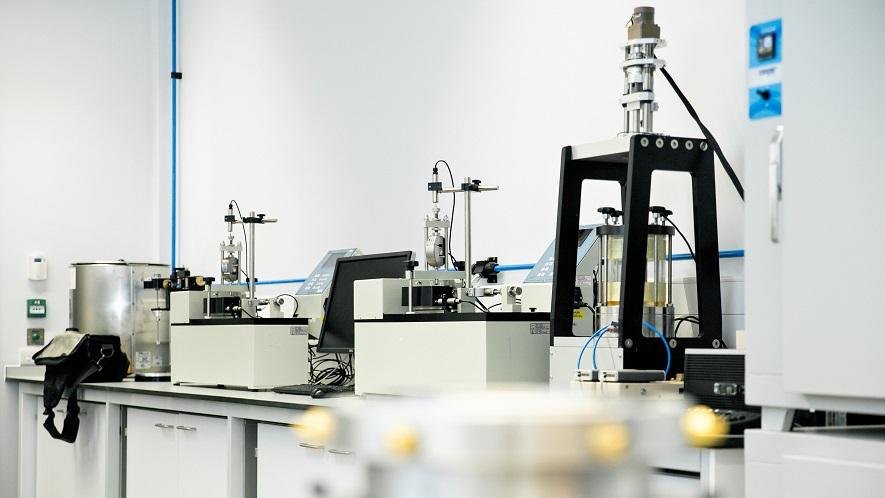
The Geotechnical and Environmental Research Group has extensive facilities for laboratory testing, centrifuge modelling, and numerical analysis, operating across three sites.
Schofield Centre
The Schofield Centre is a world-renowned laboratory for physical modelling in geotechnics. It is home to a wide range of experimental equipment, which includes the 10 m diameter Turner beam centrifuge, Minidrum centrifuge and Servo-controlled 2-axis actuators for simulating a range of civil engineering operations. The Centre focusses on the key questions of construction and environmental technology, where field, computational and physical modelling studies can be integrated in collaboration with industry.
The Geotechnical Laboratories at the Schofield Centre include:
Centrifuge Laboratory
The Centrifuge Laboratory houses the Turner Beam Centrifuge. Our centrifuge projects use in-flight actuators like our 1-D and 2-D robots which can operate under force or displacement control. We are able to characterise the soil inflight using mini CPT or T-bar devices and can carry out of shear wave velocity (Vs) profiling. Recently we added a servo-hydraulic earthquake actuator that is able to model realistic earthquake motions like the Kobe or Northridge earthquakes. It operates using a powerful hydraulic power-pack and the hydro-static bearing supported high pressure (300 bar) fluid slip rings. This device replaces the hugely successful Stored Angular Momentum (SAM) earthquake actuator. We are now able to use high speed imaging followed by PIV in earthquake tests to follow soil deformations below structures in the pre- and post-liquefaction phases.
Soil Chemistry Laboratory
Shaking Table Laboratory
Mini-drum Laboratory
The MKII minidrum centrifuge was developed in the mid 1990s to provide a relatively inexpensive and quick alternative to conventional larger-scale centrifuge model tests. With a radius of only 370mm, the minidrum centrifuge is ideally suited to teaching applications and the modelling of processes where large quantities of soil are expensive to retrieve (eg. sea-bed pipelines). At a 1/400th scale, a prototype site of dimensions 850x70x50m can be modelled in the ring channel.
Civil Engineering Building
The Geotechnical and Environmental Research Group is partly based in the Civil Engineering Building which houses the UKCRIC National Research Facility for Infrastructure Sensing (NRFIS), a state-of-the-art research facility containing extensive facilities for laboratory testing, centrifuge modelling, and numerical analysis across the full range of civil engineering disciplines.
The Geotechnical Laboratories at the Civil Engineering Building include:
Geomechanics Laboratories
The geomechanic laboratories at the Civil Engineering Building complement the existing physical modelling and geotechnical testing facilities available at the University of Cambridge - Schofield Centre. They enable fundamental research on soil response at the element level as well as provide the highest quality of complementary data to fully leverage field testing and monitoring related to infrastructure. The laboratories provide advanced facilities for static element testing, dynamic testing, and thermo-hydro-mechanical testing.
